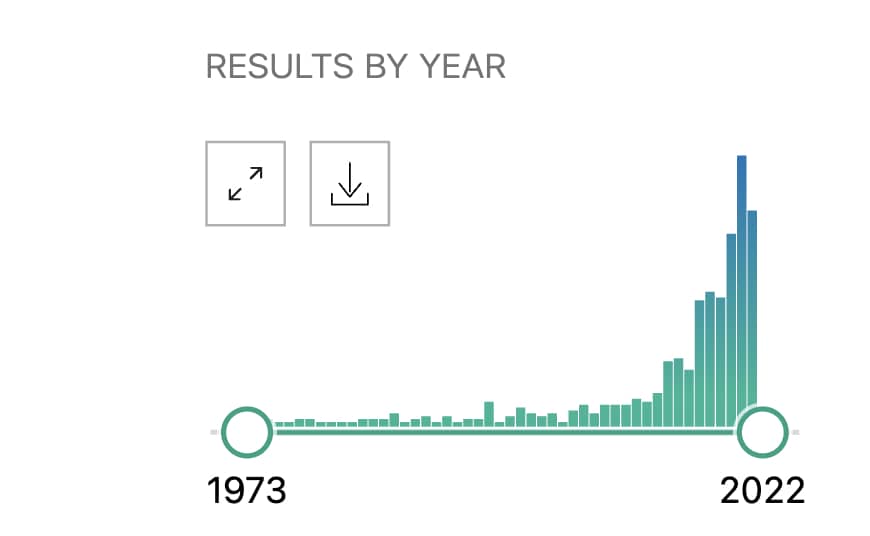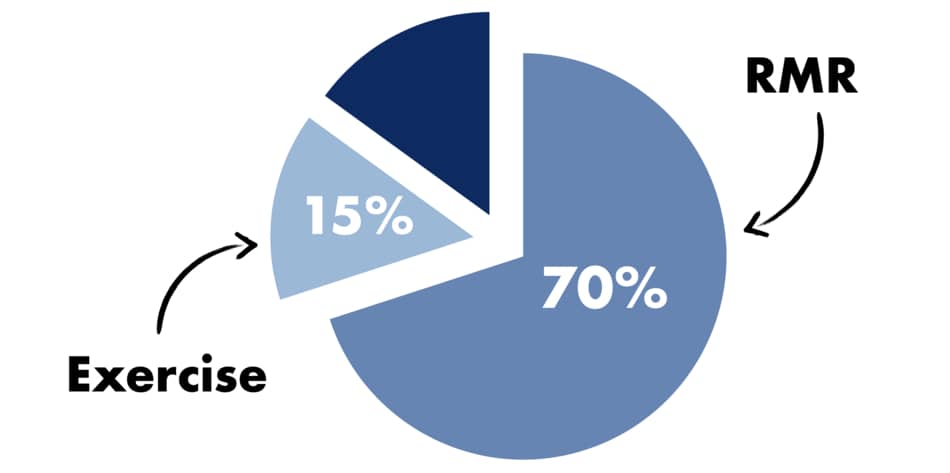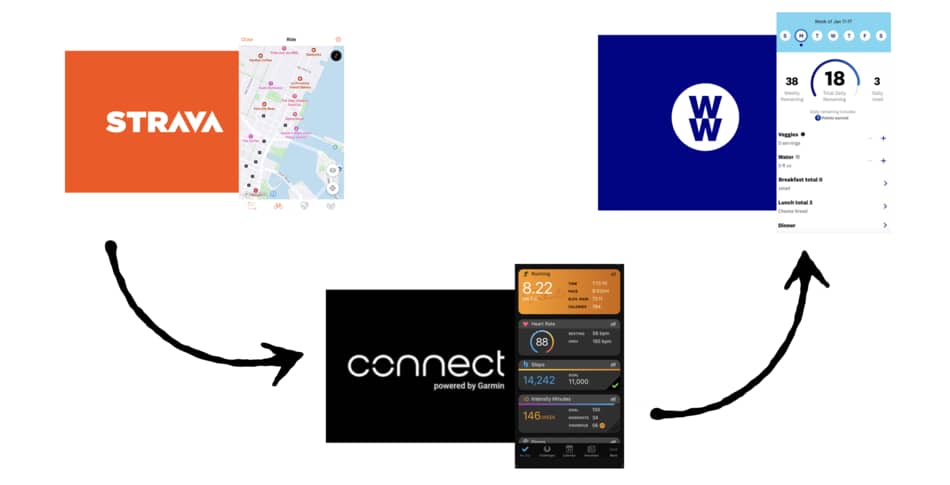Recently, weight watchers have revolutionalized their points system, which can now be adjusted based on your activity level. In this article, I will clarify how to track peloton on weight watchers, and what are the benefits.

Overview
- You can connect the peloton to the weight watchers app to track your activity level.
- Syncing peloton with the WW app will allow you to add more personal points to your daily budget.
- However, it can only be done via third-party apps like Fitbit, Google Fit, or Garmin because the peloton doesn’t integrate directly with the WW app.
(I will also unpack some of the benefits that come with using both the peloton and WW programs.)
What is Weight Watchers?
WW International (previously known as weight watchers international) is a global weight loss company.
It was founded in 1963 and it specializes in calorie-restriction diets, based on a point system called “personal points”.
The weight watchers point works by assigning a point score to every food and drink item based on the protein, fiber, sugar, and fat content.
Instead of calculating calories, The WW diet program uses points to create a mild calorie deficit that leads to negative energy balance and weight loss.
You can think of personal points like a portion size guide that helps you to navigate how much food you need to eat based on your goals.
My thoughts on weight watchers
The WW system reminds me of a very popular Zone Diet where you first calculate the number of food blocks (based on your weight, age, height, circumference, and activity level).
Then divide your meals evenly throughout the day.
One thing that I like about weight watchers is they don’t rely on meal replacements.
Instead, they put a lot of emphasis on eating whole foods that are minimally processed. Also, they offer multiple ways to work with their customers:
- Tracking points on your mobile app, or website.
- Online coaching with a nutritionist.
- In-person group meetings
Another thing that I love about WW is they have a smart way to encourage people to eat foods that have high satiety and low calories by grouping them into ZeroPoint foods.
What are ZeroPoint foods in weight watchers? The zero point foods in weight watchers are the list of over 400 nutrient-rich foods that have a low glycemic index and high satiety scores. These foods usually are high in protein, fiber, and water, which makes you feel fuller for longer, and doesn’t count towards your daily point budget.
In other words, you can eat as many ZeroPoint foods as you want on the WW diet.
Is the weight watchers program effective? As a whole, the weight watchers program is effective because it doesn’t restrict any macronutrients from the diet (e.g. meat or carbs), which makes it more sustainable over the long term. Plus, studies have shown that WW is the only behavioral weight-loss program that has been shown to be effective in clinical trials.
In fact, there are over 450 scientific studies done on weight watchers assessing their efficacy on fat loss, as well as comparing them with other popular weight loss programs like Nutrisystem or Jenny Craig.

In other words, WW is one of the most well-researched weight loss programs available.
Benefits I’ve experienced using Peloton and Weight Watchers
Here are the benefits I’ve experienced from using WW during my Peloton weight loss journey.
1. Higher dietary adherence
I personally find that when I ride my peloton on daily basis I get more motivated to continue with the diet plan.
On the other hand, if I skip my workouts, I feel less motivation and higher cravings for foods that I know I should avoid.
One study has shown that the “additional benefit of aerobic exercise during energy restriction is enhanced dietary compliance, which has important implications for the treatment of moderate obesity”.
This means that people who are physically active and undergo calorie restriction are more likely to stick to the diet if they exercise on regular basis.
Plus, it’s not a secret that exercise and diet lead to significantly greater energy deficit than the diet alone.
2. More SmartPoints
Weight Watchers assign points to each food and drink item that I eat (apart from ZeroPoint foods).
This means I have a daily limit of points and you need to make food decisions to not exceed this number.
However, adding peloton workouts to my WW app (in the form of active minutes) boost my point score, which means I can eat more.
In the past, the WW program didn’t include exercise in their points calculations, which means you get to eat the same amount of points, regardless of whether you’re active or not.
Right now, the WW “PersonalPoints” system takes into account my activity level and your weekly training volume (aka how much your train).
3. Higher satiety
Using a peloton on weekly basis helped me to regulate my hunger and lower my appetite.
According to Obesity Reviews Journal, regular exercise reduces fasting leptin and glucose level, which leads to higher satiety sensitivity (feeling full for longer).
“Evidence from long-term studies in young adults indicates that exercise and improvements in body composition result in enhanced satiety sensitivity, thus promoting metabolic balance and relative appetite control,” states the journal.
In other words, exercise is like an appetite suppressant.
4. Higher metabolic rate
Peloton workouts target both cardio and strength, which helped me to increase muscle mass and lean body weight.
Higher lean body mass leads to higher RMR (resting metabolic rate), which means I can burn more calories at rest.
According to the National Academy of Sports Medicine, the resting metabolic rate is the number of calories your body burns on a daily basis for things like breathing and oxygen transport, protein synthesis, blood flow, and cognitive processes.
“The resting metabolic rate accounts for approximately 70% of your total daily calorie expenditure,” according to NASM.
(Here’s a photo that helps to illustrate that.)

According to NASM, lean muscle mass is one of the most “metabolically expensive” tissue because it requires more oxygen.
The more muscle you have, the more oxygen your body pushes through the circulation (which requires more energy to expend).
5. Weight watchers peloton group
Another great benefit of doing peloton and WW together was the community. The WW app has a number of groups like “Peloton Lovers”, which is great to keep yourself accountable.
People in the group share stories, recipes, ideas, and workouts that are both inspiring and motivating.
How to track peloton on weight watchers?
Connecting the peloton with weight watchers allows you to add more personal points and boost your daily budget, based on your daily and weekly activity level.
This means you get rewarded and can eat more food, which makes the program more flexible and easier to follow.
However, the WW app only allows to sync of a handful of fitness trackers:
- Fitbit
- Google Fit
- Withings
- Misfit
- Garmin
- MapMyRun
- Daily Burn
- Apple Health
- Apple Watch
How do I sync my peloton to weight watchers?
Overall, you can sync your peloton to weight watchers only via third-party apps like Apple Health, Fitbit, or Garmin.
The peloton app doesn’t have built-in integration with the WW app, which means you have to first sync your bike with Strava, then with Garmin, and then with the WW app.
See below.

Of course, the easiest way is to sync your Apple Watch with your peloton, stream all your workouts into the Apple, and then sync them with the WW app.
However, I personally like to use Garmin with my Peloton bike because this app offers me the most comprehensive analysis of my fitness activity, as well as sleep, stress, and recovery.
Conclusion
As you can see, adding a peloton to weight watchers is not simple and require a little bit of back and forth between other apps. However, I think it is worth it, especially if you’re starting your WW program and you want to stay as accurate with your physical activity as possible.
